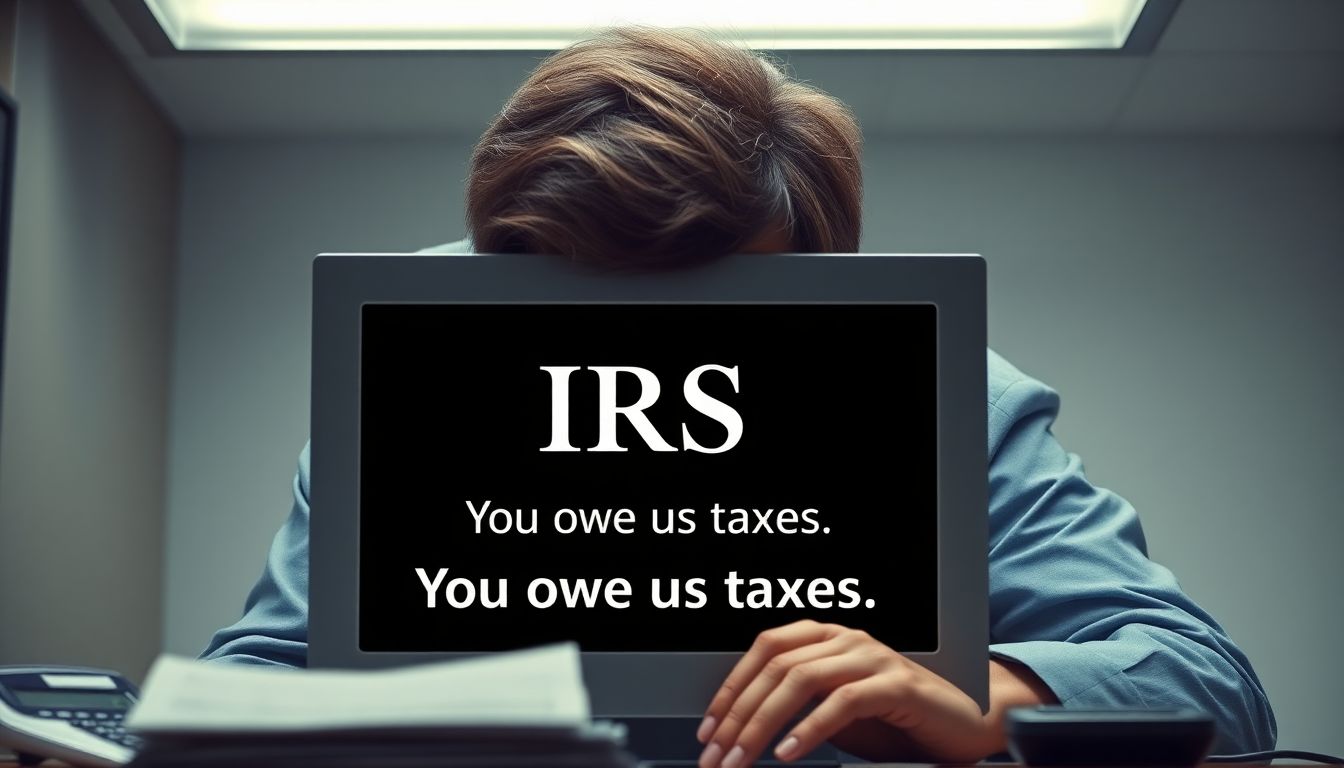
IRS Notice: You Owe Taxes—How to Determine Your Liability and Avoid Penalties
Unexpected tax bills often come like a punch in the gut. It's easy to feel lost when the IRS sends a notice stating that you owe taxes, yet does not tell you how much. For many taxpayers, this confusion can lead to stress and frustration, especially when navigating unclear IRS communication.
Receiving a notice from the IRS indicating tax liability without a clear dollar amount can feel overwhelming. You're left scratching your head, wondering how to figure out what you owe. This article aims to guide you through understanding your tax liability, deciphering IRS communications, and avoiding costly penalties.
Understanding Your IRS Notice
Deciphering IRS Tax Notices: Types and Meanings
The IRS sends various types of notices, each with specific meanings. Here are some common ones:
- CP14: This is a notice telling you that the IRS has assessed tax and you owe money.
- CP2000: This notice indicates that the IRS has found discrepancies between your tax return and documents it has received, which may lead to additional tax owed.
Common reasons for tax liability include underreported income and unpaid estimated taxes.
Identifying the Specific Tax Year and Issue
Each IRS notice mentions the tax year concerned. You'll easily find this detail near the top. Issues can range from underpayment of tax to missed estimated payments. Understanding the specific issue is crucial for resolving your tax matters.
Gathering Necessary Tax Documents
To determine how much you owe, gather necessary documents:
- W-2s: Earnings statements from your employer.
- 1099s: For freelance or contract work.
- Tax Returns: Your filed documents from previous years.
You can find these documents from your online tax portal, your employer, or financial institutions.
Calculating Your Tax Liability
Using IRS Tax Forms and Publications
The IRS provides many resources to help you calculate your tax liability. Look for:
- Form 1040: The primary form for individual income tax.
- Publication 17: General guide for individual income tax.
For direct access to official resources, visit the IRS website.
Utilizing Tax Software or Professionals
Tax software like TurboTax or H&R Block can simplify tax calculations. They guide you step-by-step, ensuring accuracy. If your tax situation is complex or you feel unsure, consider hiring a professional tax preparer.
Reconciling Your Records with the IRS Notice
Start by comparing your own tax calculations against the IRS notice. Follow these steps:
- Gather all your documents.
- Check for discrepancies between what you think you owe and what the IRS states.
- If you find differences, note them down for clarification when contacting the IRS.
Communicating with the IRS
Understanding IRS Contact Methods
You have several options to reach the IRS:
- Phone: Call the IRS directly to speak with a representative.
- Mail: Send your inquiries through the postal service.
- Online: Use the IRS online portal for certain queries.
Response times can vary, so plan accordingly.
Preparing for IRS Communication
Before you contact the IRS, get organized:
- Have all relevant documents ready.
- Write down specific questions to ask during your call.
Being prepared can make your communication much smoother.
Negotiating Payment Plans or Installments
If you cannot afford to pay your tax bill immediately, don’t worry. The IRS offers various payment plans. You may even qualify for an Offer in Compromise, which lets you settle your tax debt for less than you owe. For more information, check the IRS payment plans page.
Avoiding Penalties and Interest
Understanding Penalties and Interest Rates
When you don't pay taxes on time, penalties and interest can accrue quickly. Common penalties include:
- Failure-to-file penalty
- Failure-to-pay penalty
For details, check IRS Publication 556.
Strategies for Penalty Mitigation
To minimize penalties:
- File your tax return on time, even if you can't pay.
- Make partial payments to show you are taking action.
Timely communication with the IRS can also help lessen penalties.
IRS Penalty Abatement Programs
The IRS offers programs that allow for penalty relief in certain cases. Factors like first-time compliance and reasonable cause can qualify you for relief. For details, review IRS resources on penalty abatement.
Conclusion
Determining your tax liability can be tricky, but understanding IRS notices, gathering documents, and calculating amounts is crucial. Keeping accurate records and communicating promptly with the IRS can help you avoid penalties. Take control of your situation—don't let tax issues spiral out of hand. Start by reviewing your IRS notice and taking action today. Your financial peace of mind is worth it.